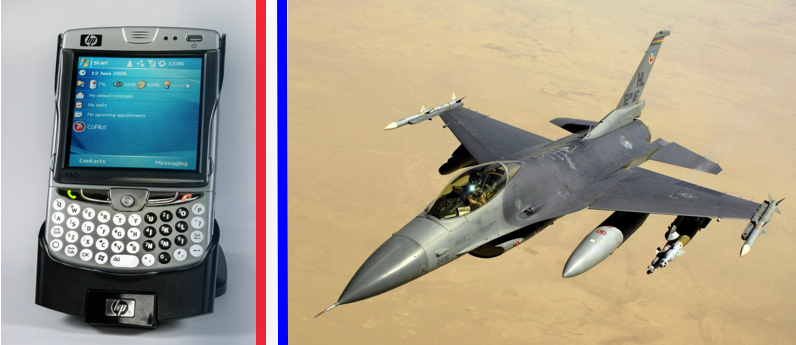

While flying an F-16 in the Iraq War, Air Force pilot Raj Shah had a multimillion-dollar global positioning system (GPS) at his disposal. While flying combat missions in 2006, he had everything the Air Force thought he might need, including the global coordinates of his intended targets.
His problem was there was no way of looking at the military-specific system to know where he was in relation to those targets. There was no little plane icon on the screen to indicate where he was. No dot. Not even a little triangle.
It seems that many millions of dollars may pay for innovation, but a little common sense came at a much higher price – or did it? Shah found a simple fix, and began to revolutionize the way the U.S. military interacts with maybe its greatest asset of the 21st century: Big Tech.
While flying those missions, it occurred to Shah that civilian-grade GPS technology was far surpassing anything the military had. The F-16 took its first flight some 47 years ago and even though its avionics and other tech had been upgraded since, getting those upgrades often comes with some intense budgetary wrangling.

Needless to say, it did not have Waze or Google Maps available to the pilots. While neither of those apps were available back then, the F-16 didn’t have the latest and greatest that was. And despite what Donald Rumsfeld has famously said about going to war with the army you have, Shah thought he could do better.
When he was able to go home on leave, one of the first things the pilot did was pick up an iPAQ HW-6500, a PC-based digital assistant launched by Compaq in the year 2000. He then loaded a run-of-the-mill aviation map application. When he returned to duty in Iraq, he put the iPAQ on his lap and used that to aid his navigation, ignoring the ultra-expensive software on his F-16.

Shah would later head the Silicon Valley-based Defense Innovation Unit, a Pentagon office that not only specializes in working with America’s Big Tech sector, but is able to fast-track the funding of special prototypes. This was especially important as a way to integrate emerging technologies into the U.S. military at a time when American military dominance relied on it staying ahead of technological rivals.
The DIUx (the “x” stands for “experimental”) was founded in 2015 to do just that. Using an old Space Race-era law that allowed NASA to stay one step ahead of the Soviet Union, the DIUx was able to procure new technologies. The law was called “Other Transaction Authority” (OTA), and was a fast lane for the military and defense contractors to introduce new tech to the U.S. government and its various agencies.
That same year, Congress passed a law expanding the use of OTA to various other projects, so long as it was blessed by the Pentagon brass for its military effectiveness. Silicon Valley executives now had a reason to sit down with U.S. government and military officials, knowing there could be a deal within weeks – instead of months or years.
Raj Shah, the F-16 pilot who originally flew missions in the Iraq War with a civilian GPS system, took over as head of the DIUx office in 2016 and expanded its reach beyond Silicon Valley. By the time he left the post in 2018, he had branch offices in Boston and in Austin, Texas, two other important sectors of technological innovation and development.
